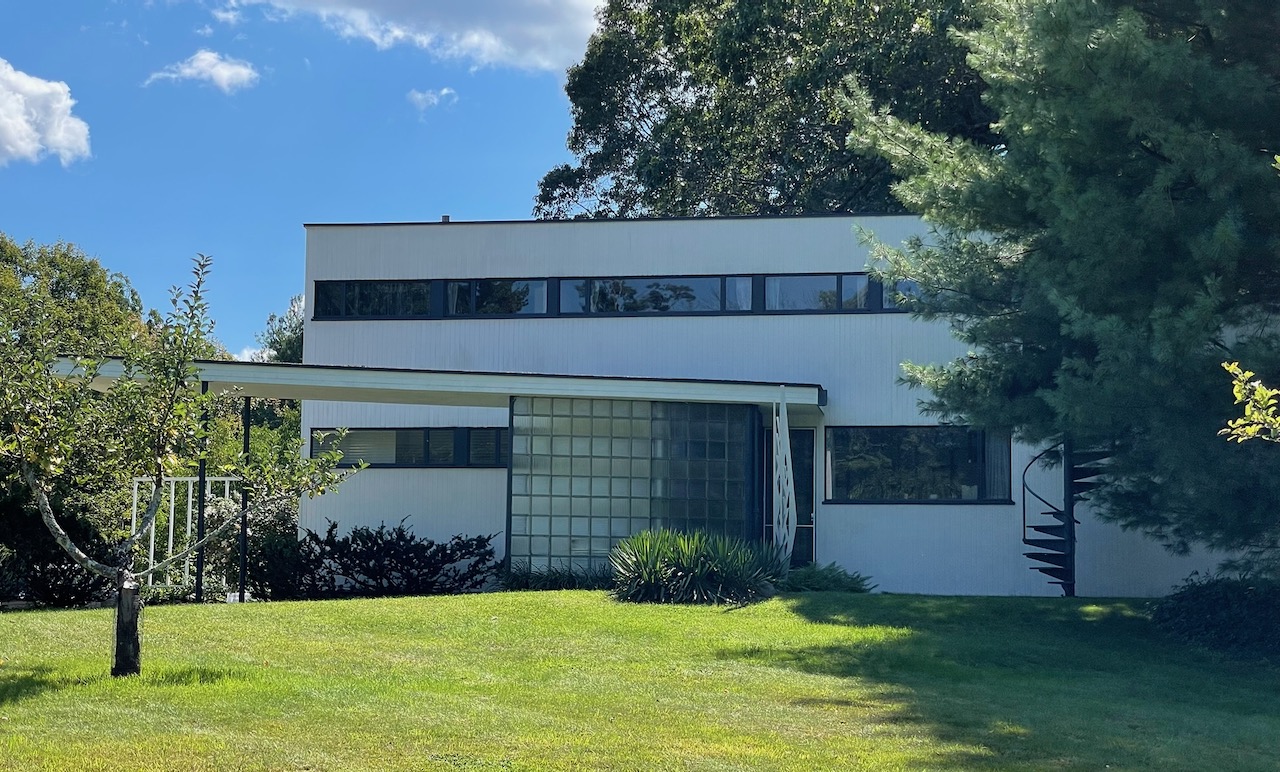Just beyond a stonewall on Lincoln’s Baker Bridge Road, a gravel drive leads to the Gropius House. This Modernist home is not only a shining example of the Bauhaus architectural movement, it was built and lived in by the Bauhaus design school’s founder, Walter Gropius. Sporting wide ribbon windows and a bright white exterior, Gropius’ design was somewhat out of place among the colonial revival homes of 1938 Lincoln, Massachusetts. But the story of how it came to be in this historic corner of New England emphasizes that the Gropius House was very much a product of its time.
The Bauhaus was founded in Weimar Germany in 1919, amid a climate of cultural experimentation following the First World War. Gropius gained a fair amount of notoriety alongside his school, but both the institution and its founder fell into the disfavor of the Third Reich as political tensions re-escalated throughout Germany. By the time the government closed the Bauhaus in 1933, Gropius had been deemed a “communist” and his bids for government-funded projects went largely unanswered.
Gropius struck up a practice in London, but the dean of the Harvard Graduate School of Design, Joseph Hudnut, swiftly offered him a professorship. Gropius accepted his appointment as chairman of the Harvard architecture program in 1937, although the German government refused to let him depart with any cash assets. Walter Gropius, his wife Ise, and their daughter Ati, arrived in the U.S. nearly destitute.
“We began looking around for a house in the beautiful countryside of Boston,” Ise later wrote in her 1977 History of the Gropius House. “[We] tried to rent a small house in Lincoln, one of the three towns… that had been the site for the first battle for independence…But our Bauhaus furniture looked indeed very strange in the small rooms of this prim little house of Colonial style.”
Not long after their arrival, the Gropiuses were invited to dinner at the home of Helen Storrow, a philanthropist known for her work with the Girl Scouts and the Eastern States Exposition, among other endeavors. Over dinner, Boston architect Henry Shepley convinced Mrs. Storrow to fund the building of the Gropiuses’ new home. Storrow admitted she found Gropius’ style of design “somewhat startling,” but she offered him $20,000 to demonstrate his work on a plot of her land in Lincoln.
The end result incorporated traditional elements of New England architecture, such as wood, brick, and fieldstone, with the glass slabs and chrome details of Gropius’ Bauhaus style. The landscape, too, became a model for Modernist yards without forgoing its New England essence. The structural integrity of the property was tested on the very first day of its completion, when the historic hurricane of 1938 rocked Massachusetts.
Nearly 90 years later, the Gropius House — and most of its contents — endure. Walter and Ise purchased the property after Helen Storrow died in 1944. After Walter died in 1969, Ise arranged the transfer of the property to the Society for the Preservation of New England Antiquities (now Historic New England), though she would remain there for the rest of her life. Soon after Ise passed, the home became a museum. It was designated a National Historic Landmark in 2000.
Sources: historicnewengland.org, A Material Evaluation of the Gropius House: Planning to Preserve a Modern Masterpiece, metrowestdailynews.com

